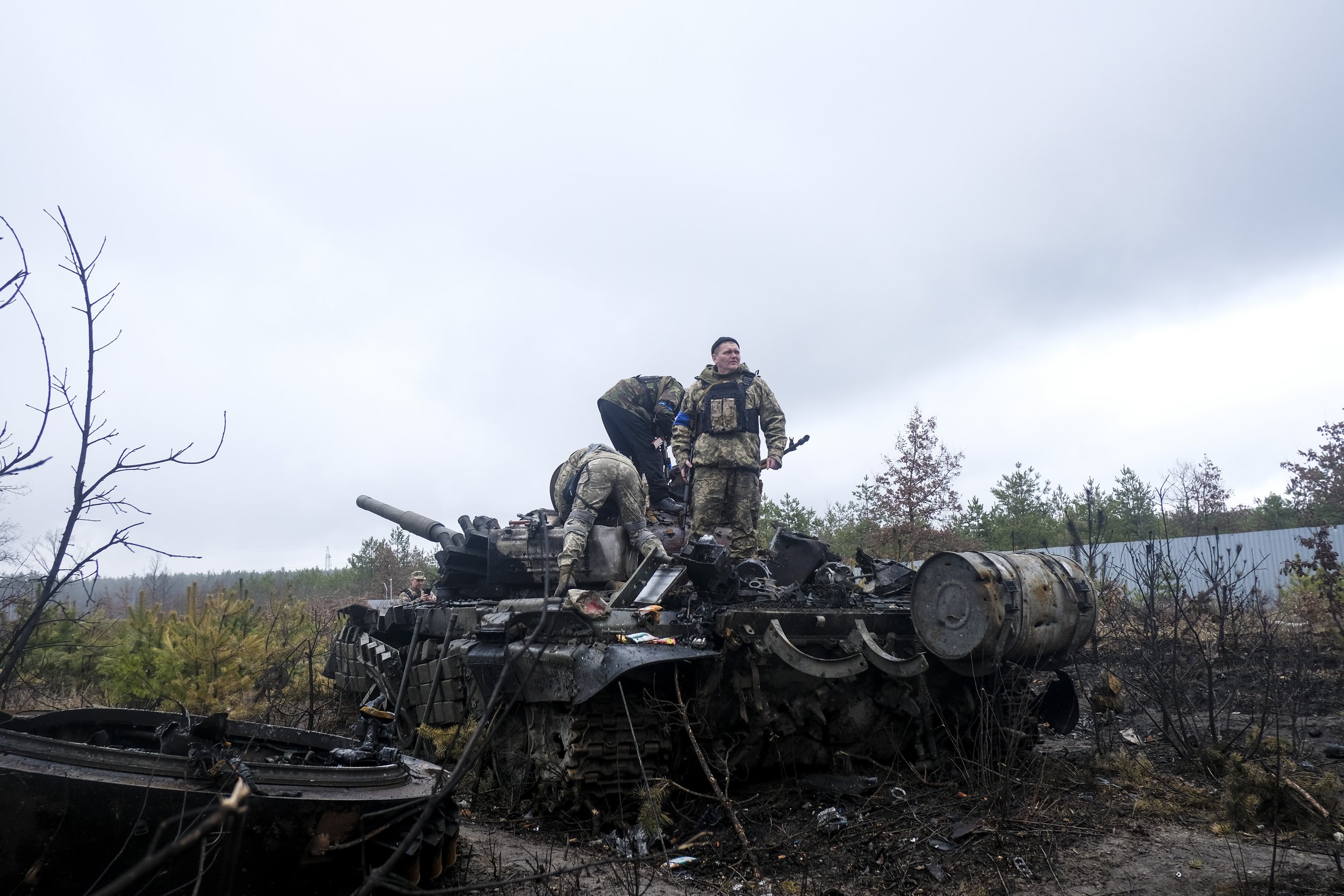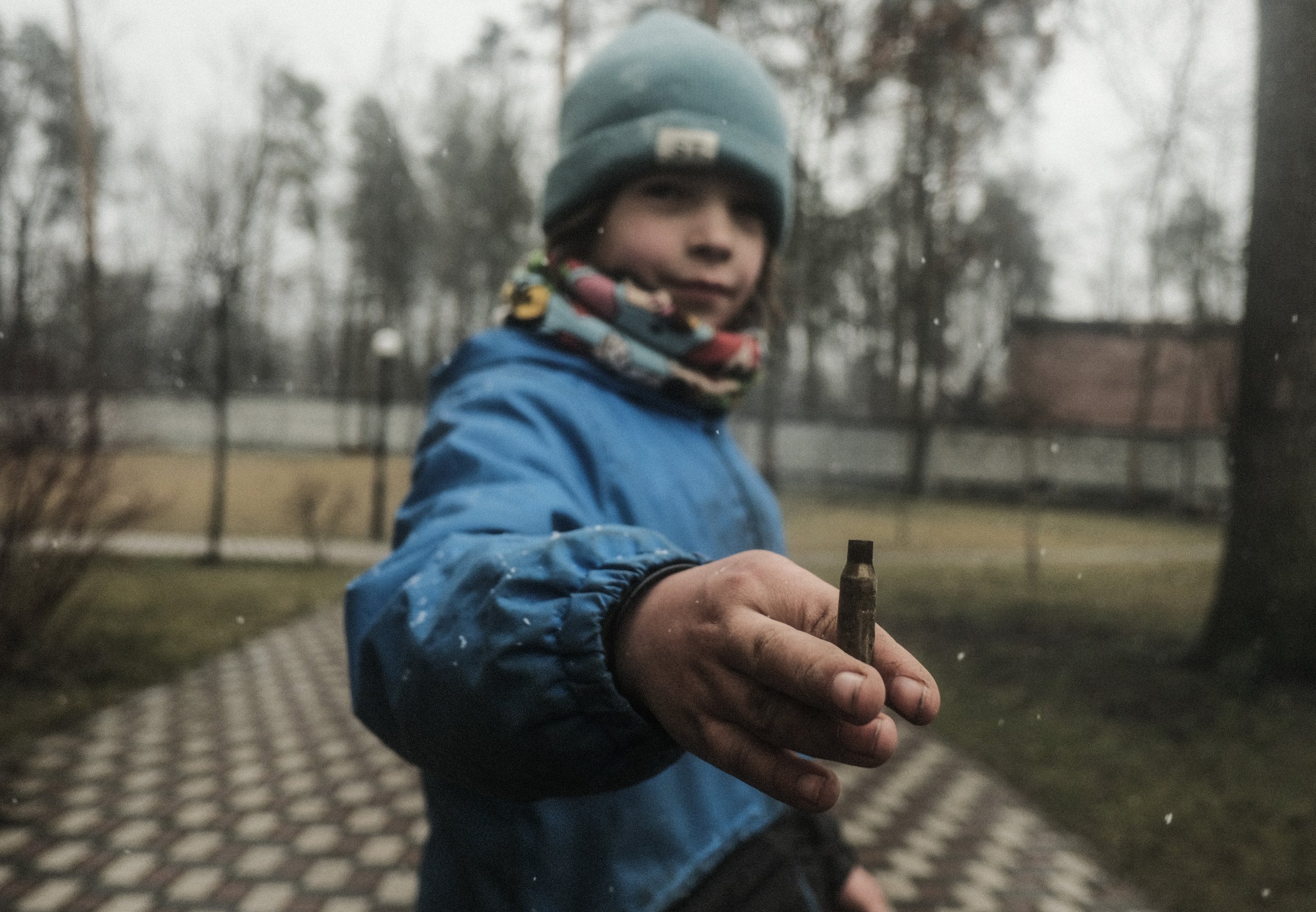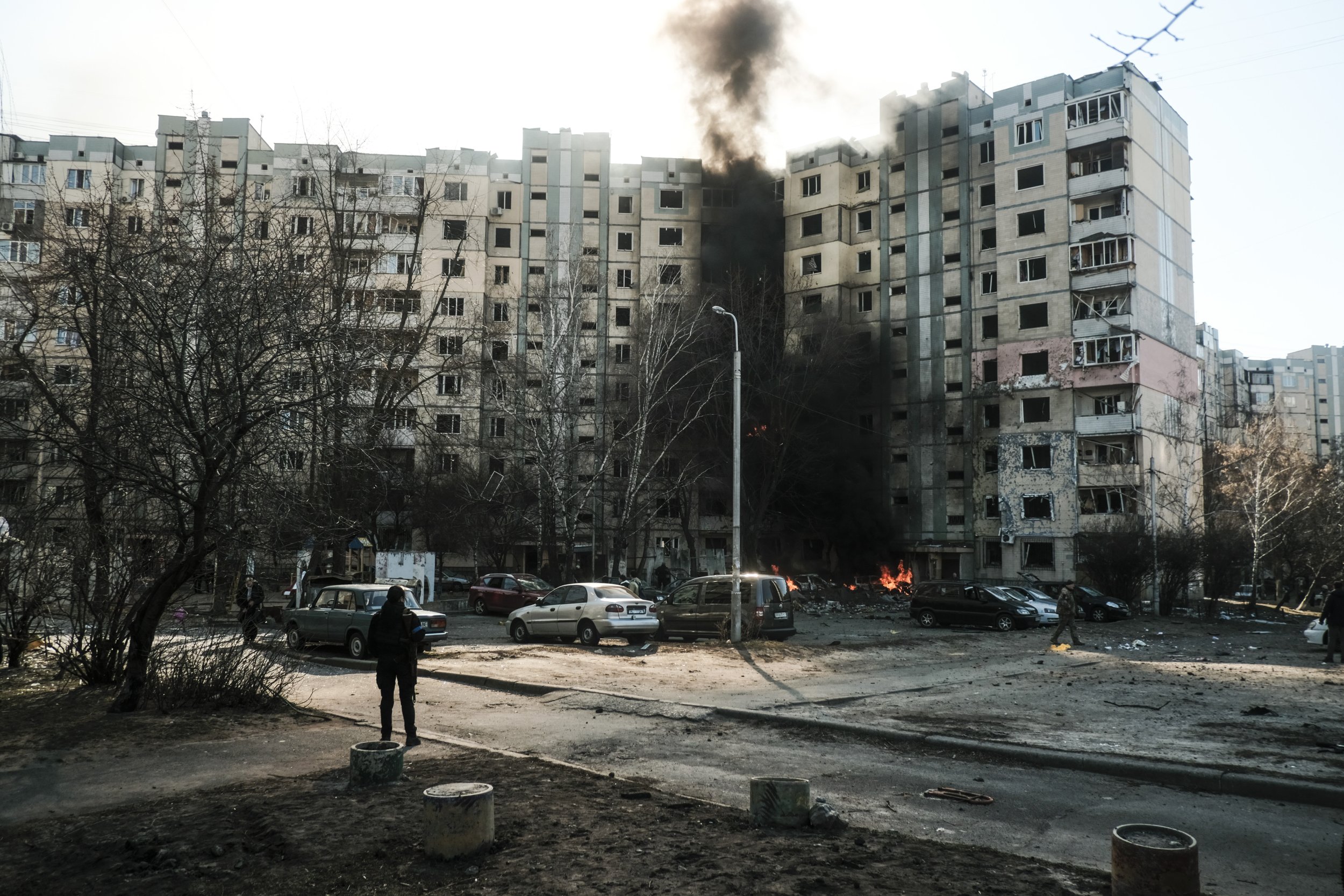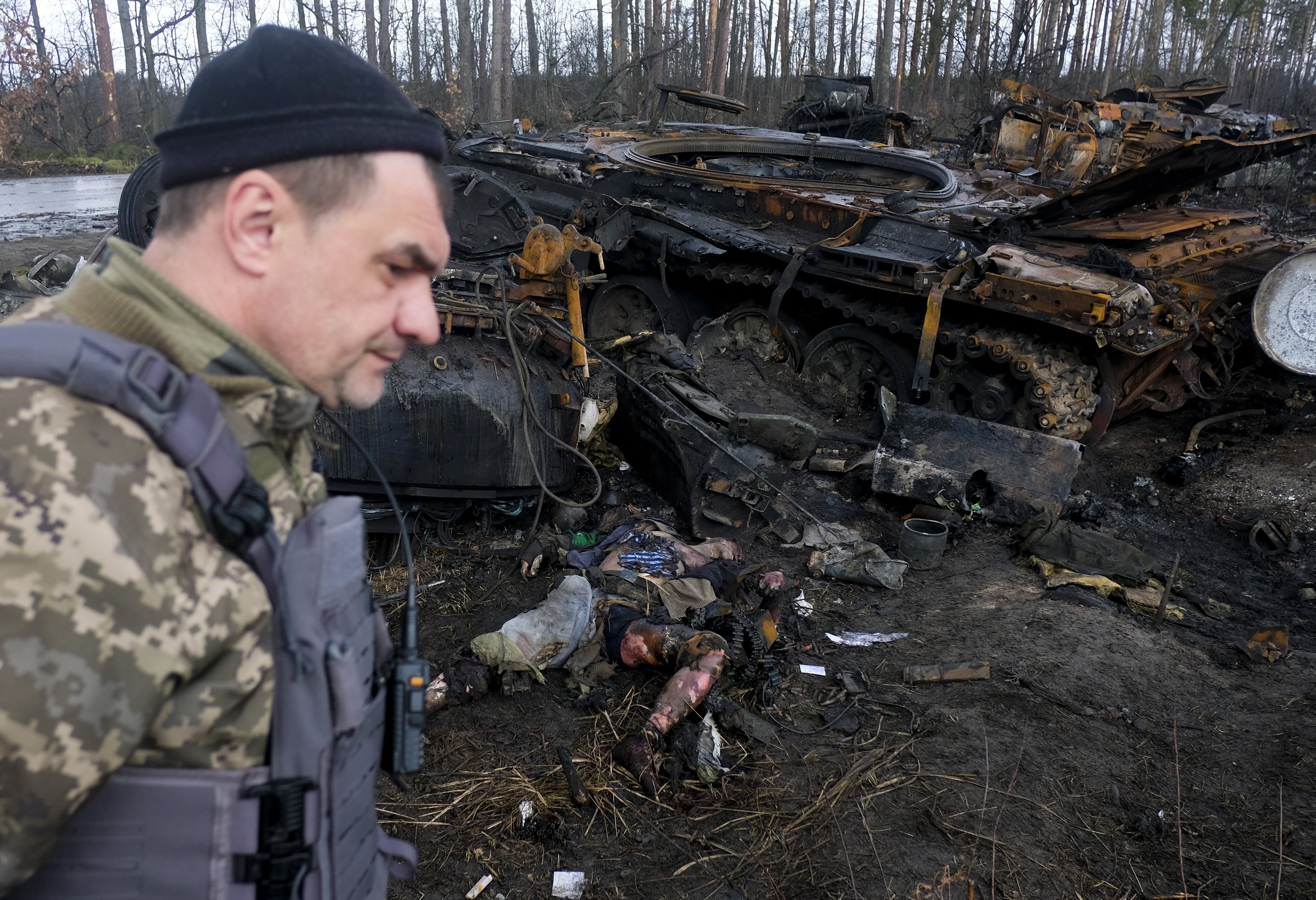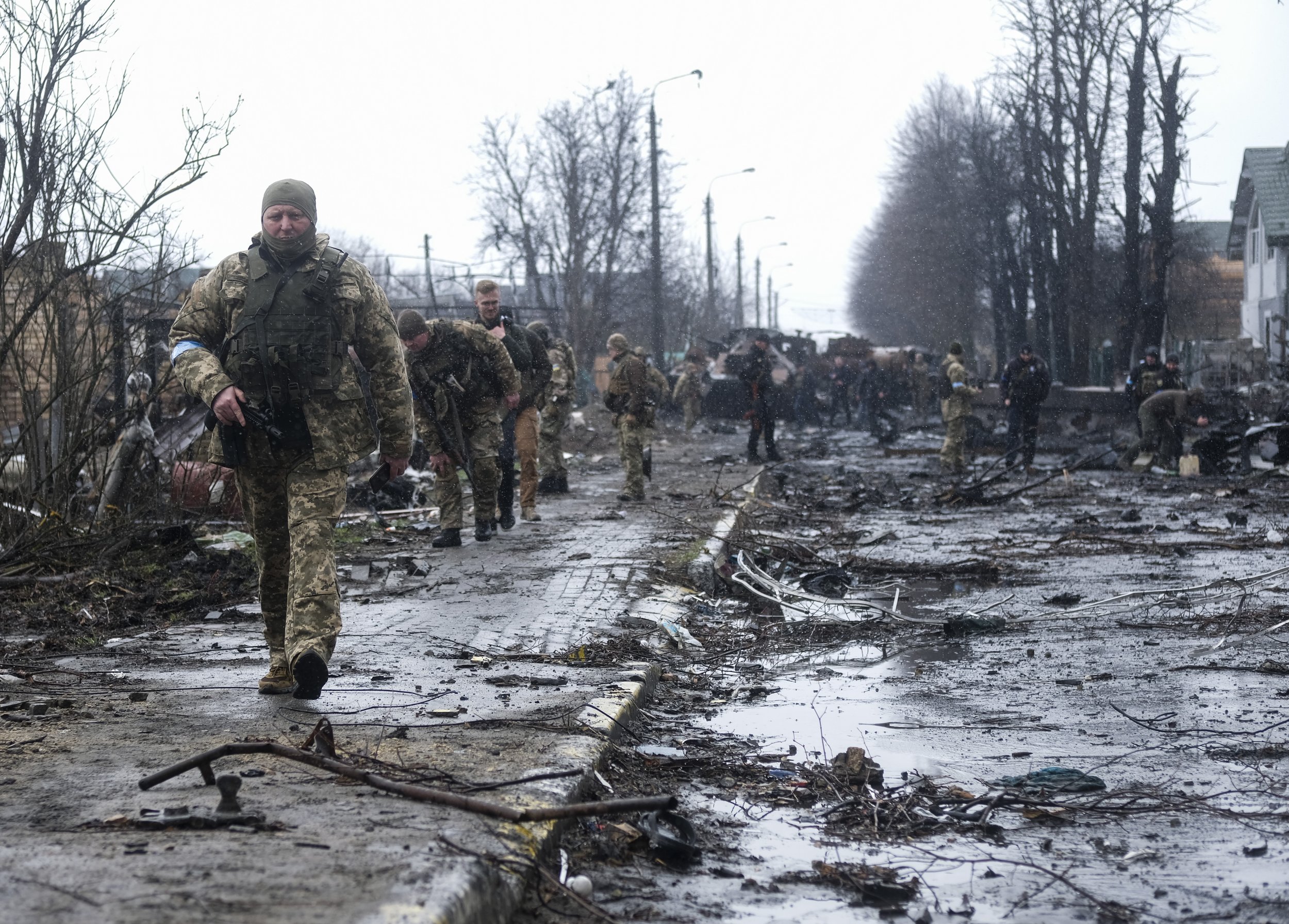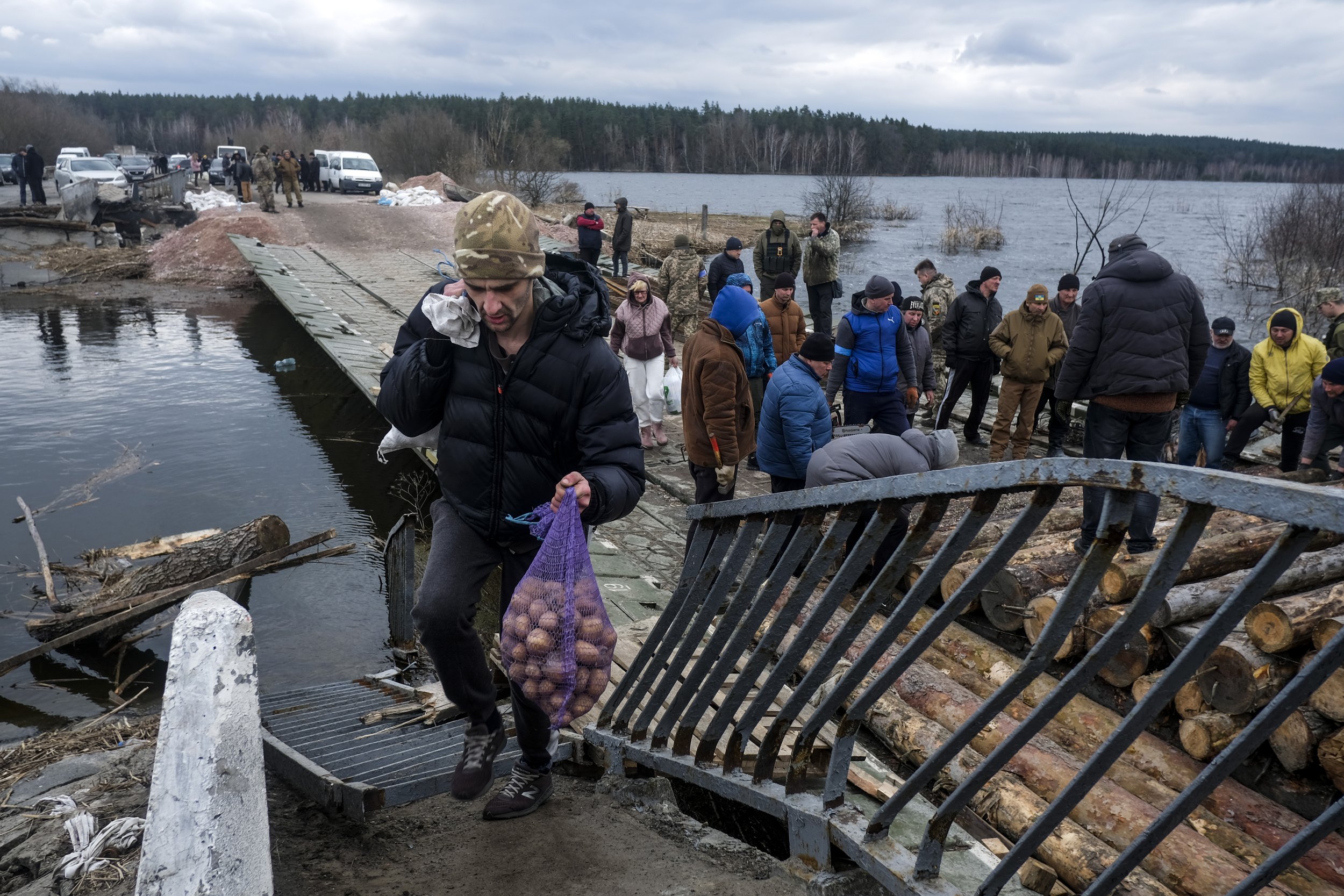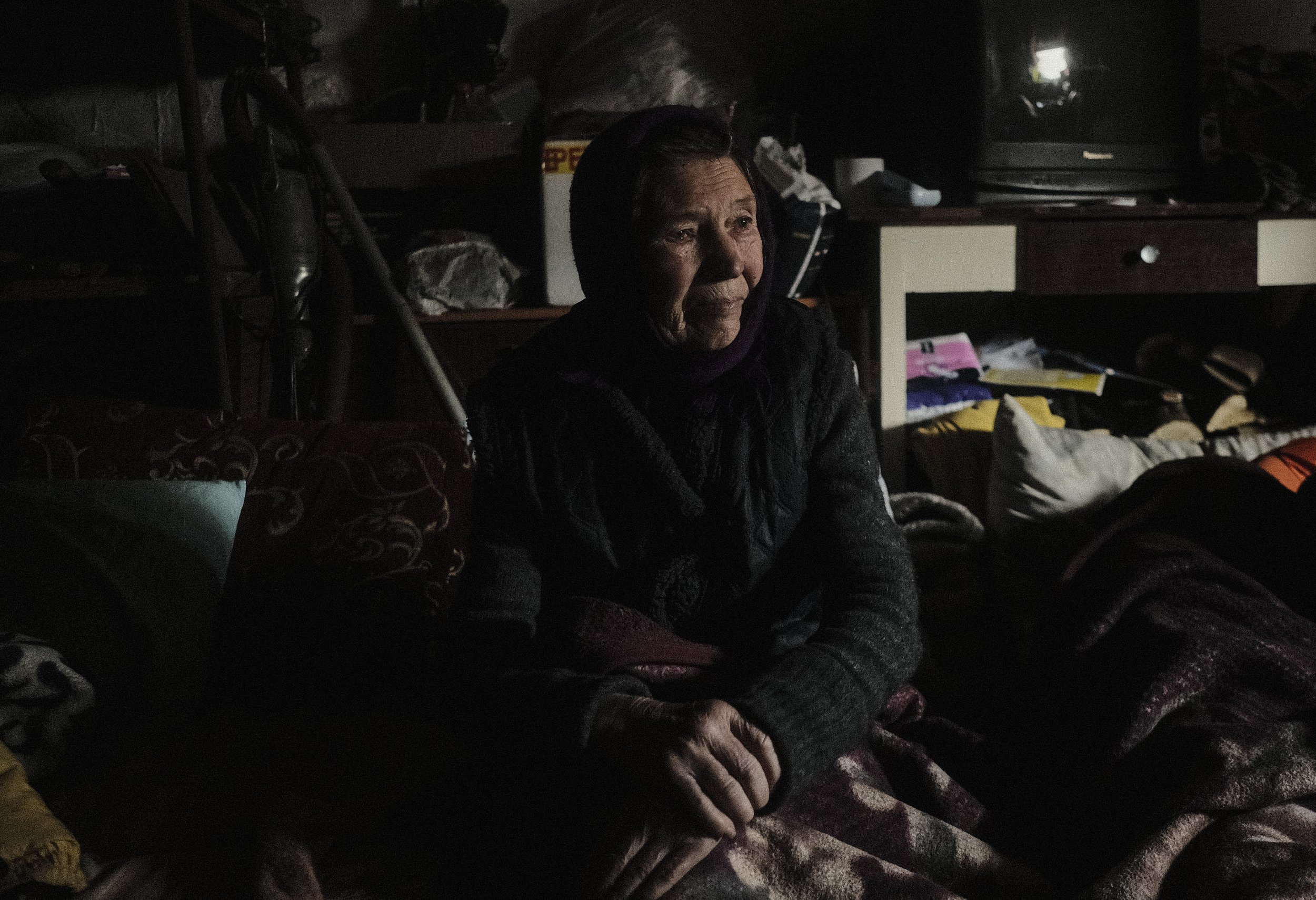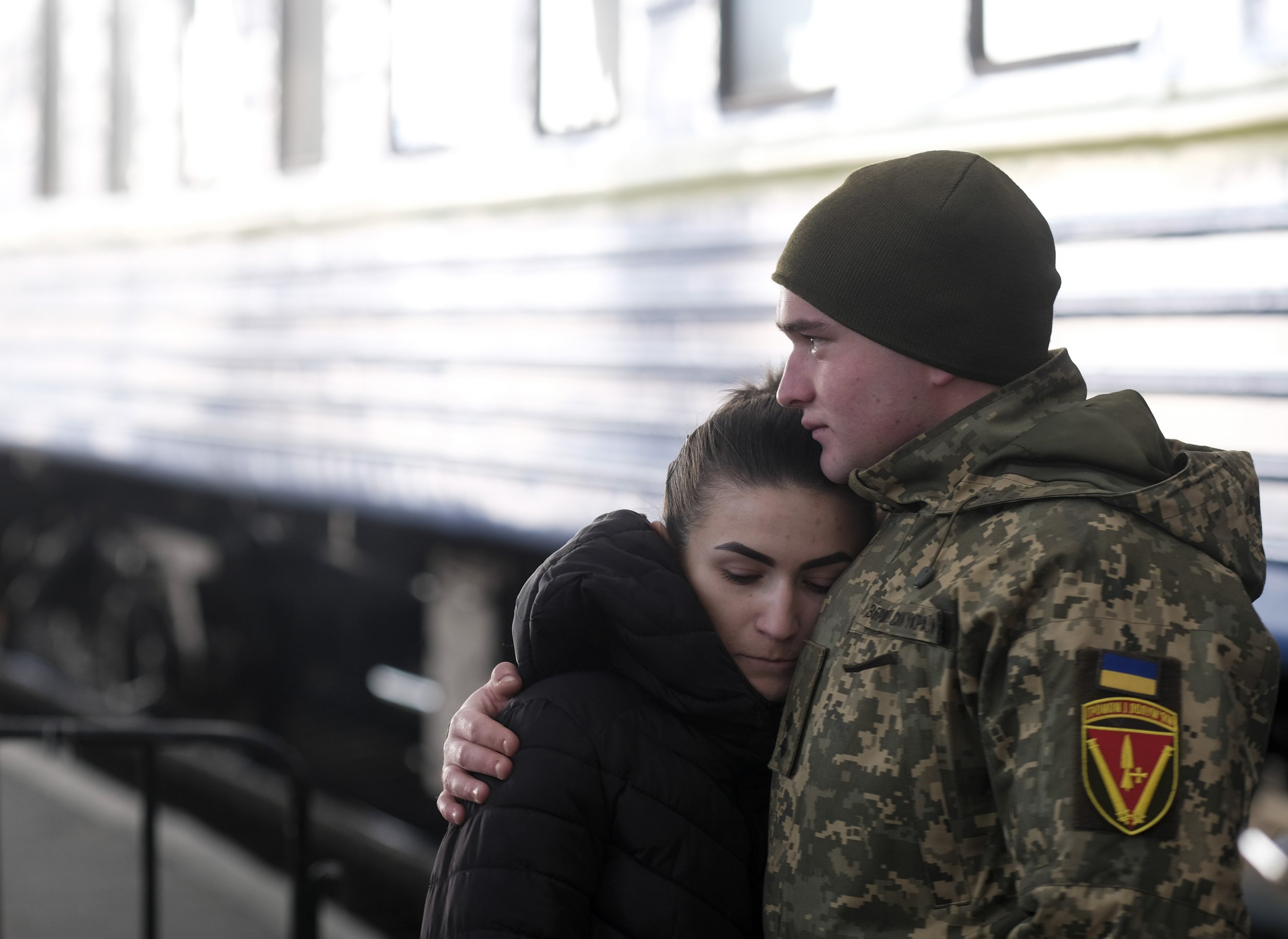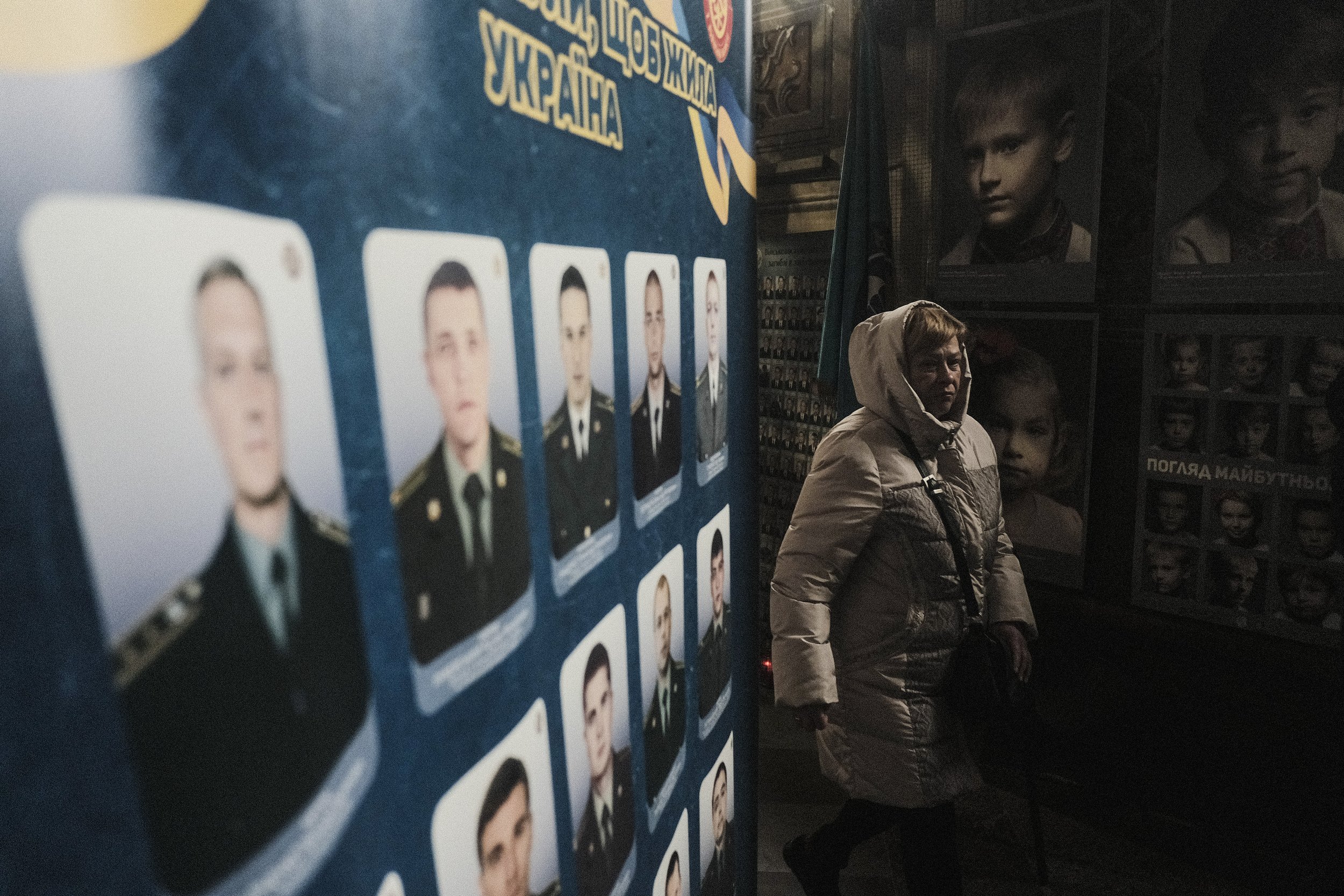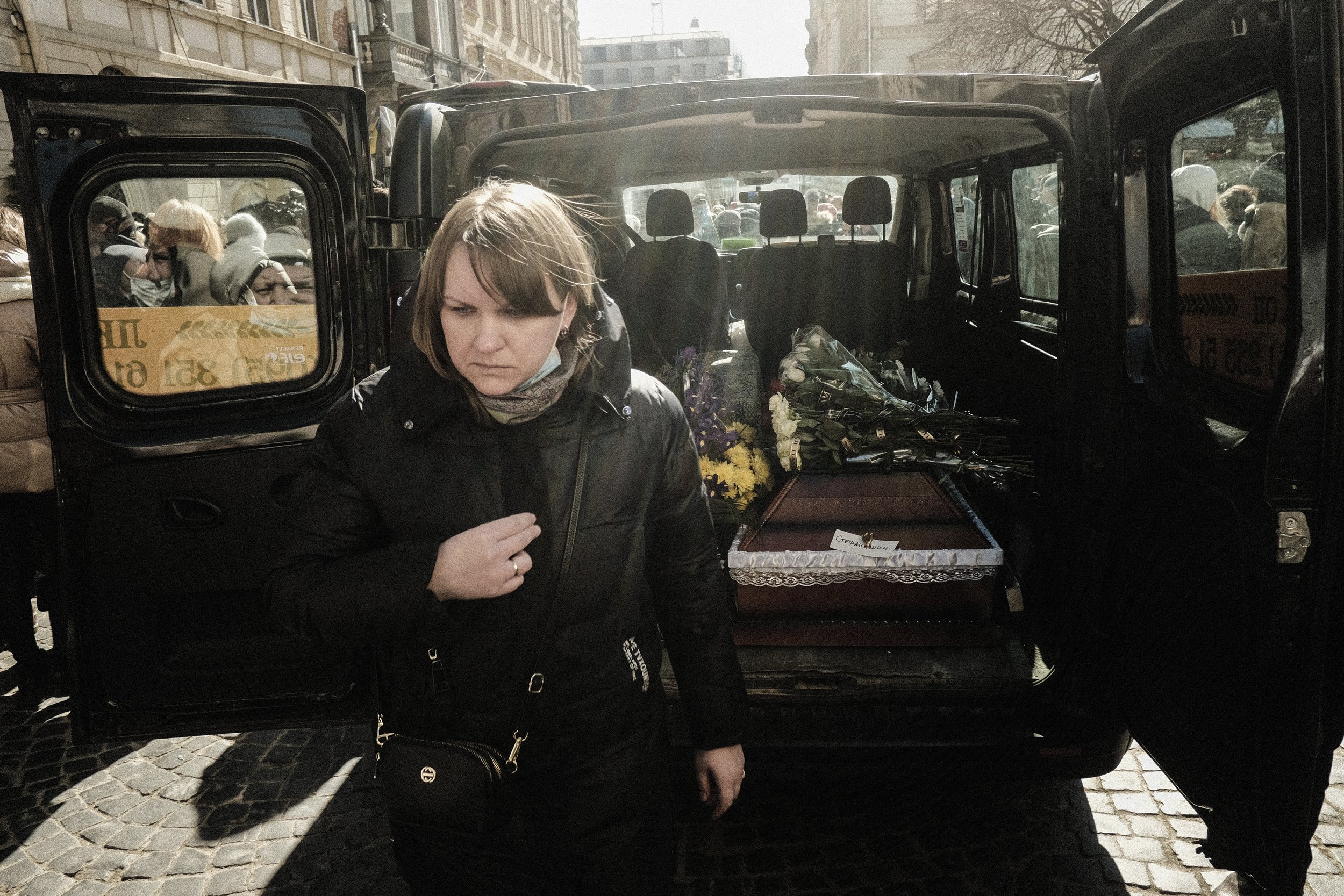On February 24, 2022, Russia launched a full-scale invasion of its’ neighbor, Ukraine. The invasion came as a shock to the world, it was the largest invasion in Europe since the Second World War, and the war itself would come to draw many similarities to it. I and my colleague Seth Herald departed quickly to get on the ground and cover the rapidly developing conflict that would come to be defined by brutal pitched battles, civilian casualties, massacres, and unyielding artillery bombardments and drone strikes across the country. Above is the equipment I usually took into the field with me to cover the war. This kit was what I took with me during the Battle of Kyiv, unlike my previous trip covering the Donbas War in 2019 I typically tried to travel light and not take my backpack or laptop equipment, instead I often would file from where I was staying in Kyiv. Most days consisted of waking up early in the morning and checking the news, eating breakfast, then meeting our driver/fixer or my local colleague and heading out to wherever the story was that day.
FROM TOP TO BOTTOM, LEFT TO RIGHT:
Anker Power Bank and iPhone cord
Fujifilm X-PRO2
Fujifilm X-PRO1 (often kept at home for backup)
Medical Kit (See an upcoming post for what is included in my med kit)
CAT Tourniquet (Along with several in my medical bag, I kept one attached to my vest at all times)
Crush-resistant hardened knuckle cut-off gloves
Nikon F3 35mm film camera
Fujifilm X-H1
Gas Mask and Filter (carried with me for the first few weeks as there were numerous threats of chemical attacks)
SD Card Holder with a mixture of 32gb and 64gb SanDisk Extreme Pro cards
Fujinon 90mm f2
Nikkor 35mm manual focus lens
Fujinon 18mm f2
Fujinon 50mm f2
Fujinon 23mm f2
Ballistics vest with 2 Level IV Ceramic Plates and velcro Press Patch
Press Credentials (Physical agency credential, journalists working in the combat zones are also required to obtain a credential from the Ukrainian Defense Ministry which was electronic and stored on your phone)
Compass
Tech Deck mini skateboard (I originally had several that I would give to children, the one pictured is also a good luck charm, weird I know)
Ballistics Helmet
Mini voice recorder for interviews and B roll sound
Burner iPhone
Moleskin Journal for notes
Newswear waist pack with 3 main pockets, 3 additional smaller pockets
Ukrainian phrasebook and dictionary (I had begun studying Ukrainian before the invasion, however was still very much a beginner in the language)
Main iPhone (used for videos, storing my Defense Ministry credentials)
Passport
There are a few items missing and some I didn’t include. I was still a smoker during the invasion so I always had several packs of cigarettes and lighters, I also carried 2 bracelets with my blood type and medical information, as well as a pack of batteries and a headlamp.
I enjoyed using the Fuji cameras as main bodies during the invasion, they were small, lightweight, pretty inconspicuous, and easy to hide and the X-H1 did 4k video, however, I’ve since switched back to Nikon as the lowlight capabilities, battery life, and sensor size were some big drawbacks for me.
Covering the invasion was extremely difficult. Shortly after the initial days of the invasion, the Ukrainian government cracked down on reporting and restricted access to many aspects of the war. Photographing checkpoints, soldiers, military positions, and military vehicles was restricted and at one point could result in arrest. Lockdowns were frequent and could sometimes last for days. Finding accommodation and transportation was very difficult as well, most hotels cost around $400 a night, and many fixers and drivers were charging around the same for a day rate. I was lucky to have a group of colleagues and we split much of the cost between us, and later I was able to stay in a friend’s apartment and share his vehicle. It was also extremely dangerous, especially in Kyiv in March as Russian forces were attempting to encircle the city and most train lines ceased operating during the Battle of Kyiv. It remains a challenge to report from Ukraine even now, however, restrictions have lessened, and if you know the language and know some people it is much easier to get to places you wouldn’t be able to get to in 2022.
I am planning to resume making these IN MY BAG posts and start an Instagram page in which I showcase other photographers’ equipment they use. I find it very interesting to see what photographers use on assignments, some people have kits that are made up of the newest state-of-the-art gear, and others have kits that are minimalistic and older equipment, but each kit is unique to that photographer and no matter what equipment is used, it’s the eye that’s behind the lens that makes a good picture or not. So stay tuned for more posts! And if you would like to showcase your kit once I start the Instagram account please reach out!
Below are some of the images I made with the kit while covering the Invasion

